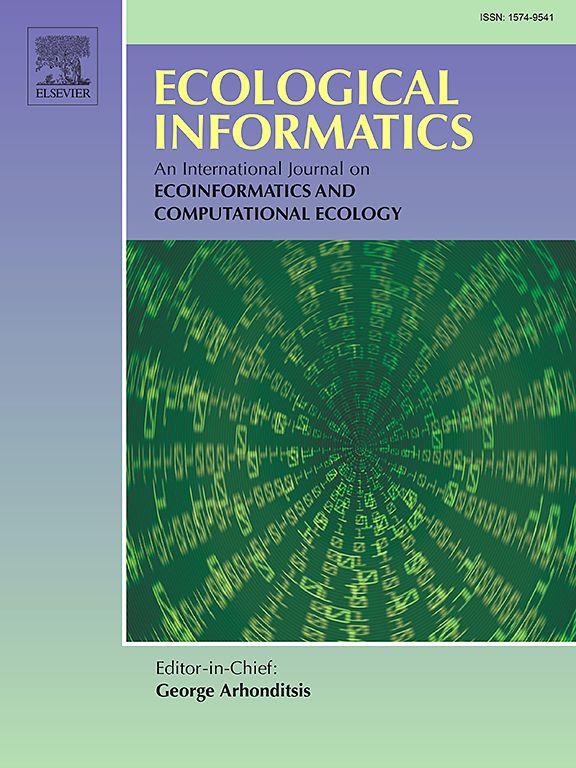Stronger response of vegetation photosynthesis to climate change than greenness in pan-Arctic region: First evidence from SIF satellite observations
IF 5.8
2区 环境科学与生态学
Q1 ECOLOGY
引用次数: 0
Abstract
The pan-Arctic terrestrial ecosystems are highly vulnerable to climate change. However, critical uncertainties remain regarding the relationship between vegetation photosynthesis and greenness and their climate sensitivities under accelerating climate change. Here, we conducted the first investigation of their climate responses by synergistically analyzing solar-induced chlorophyll fluorescence (SIF), a direct indicator of photosynthesis from the GOME-2A satellite, and normalized difference vegetation index (NDVI) from MODIS observations during the summers of 2007–2021. Our results demonstrate that both photosynthesis and greenness exhibited increasing trends, where 70.05 % of the vegetation pixels showed a consistent change, but with significant differences in growth magnitudes. Specifically, the growth magnitudes of SIF and NDVI were 6.09 % and 3.31 %, respectively, with the increase in SIF being approximately twice that of NDVI. Mechanistically, the accelerated rise in atmospheric CO2 concentration (Δ33.27 ppm), and climate warming jointly enhanced the apparent SIFyield by 4.82 %, thereby directly amplifying SIF's stronger climate sensitivity. Structural equation modeling further quantified this disparity, revealing that SIF responded to climatic factors about 1.5 times stronger than NDVI. This study provides the first evidence from satellite SIF observations that vegetation photosynthesis exhibits larger growth magnitudes and more vigorous responses to climate change than greenness in pan-Arctic ecosystems, suggesting a new perspective on the traditional NDVI-centered framework in climate impact assessment. By integrating vegetation structural and functional dynamics, our findings provide critical physiological benchmarks to refine carbon-climate feedback projections.
泛北极地区植被光合作用对气候变化的响应强于绿化率:来自SIF卫星观测的首个证据
泛北极陆地生态系统极易受到气候变化的影响。然而,在气候加速变化的背景下,植被光合作用与绿度的关系及其气候敏感性仍存在很大的不确定性。在此,我们通过协同分析太阳诱导叶绿素荧光(SIF) (gme - 2a卫星光合作用的直接指标)和MODIS观测数据的归一化植被指数(NDVI),首次研究了2007-2021年夏季它们的气候响应。结果表明,光合作用和绿化率均呈增加趋势,其中70.05%的植被像元变化一致,但增长幅度差异显著。具体来看,SIF和NDVI的增幅分别为6.09%和3.31%,SIF的增幅约为NDVI的两倍。在机理上,大气CO2浓度(Δ33.27 ppm)的加速上升和气候变暖共同使SIF的表观产量提高了4.82%,从而直接放大了SIF更强的气候敏感性。结构方程模型进一步量化了这种差异,表明SIF对气候因子的响应比NDVI强1.5倍。本研究首次从卫星SIF观测中发现,在泛北极生态系统中,植被光合作用比植被绿化率表现出更大的增长幅度和更强烈的气候变化响应,为传统的以ndvi为中心的气候影响评估框架提供了新的视角。通过整合植被结构和功能动态,我们的研究结果为完善碳-气候反馈预测提供了关键的生理基准。
本文章由计算机程序翻译,如有差异,请以英文原文为准。
求助全文
约1分钟内获得全文
求助全文
来源期刊

Ecological Informatics
环境科学-生态学
CiteScore
8.30
自引率
11.80%
发文量
346
审稿时长
46 days
期刊介绍:
The journal Ecological Informatics is devoted to the publication of high quality, peer-reviewed articles on all aspects of computational ecology, data science and biogeography. The scope of the journal takes into account the data-intensive nature of ecology, the growing capacity of information technology to access, harness and leverage complex data as well as the critical need for informing sustainable management in view of global environmental and climate change.
The nature of the journal is interdisciplinary at the crossover between ecology and informatics. It focuses on novel concepts and techniques for image- and genome-based monitoring and interpretation, sensor- and multimedia-based data acquisition, internet-based data archiving and sharing, data assimilation, modelling and prediction of ecological data.
 求助内容:
求助内容: 应助结果提醒方式:
应助结果提醒方式:


